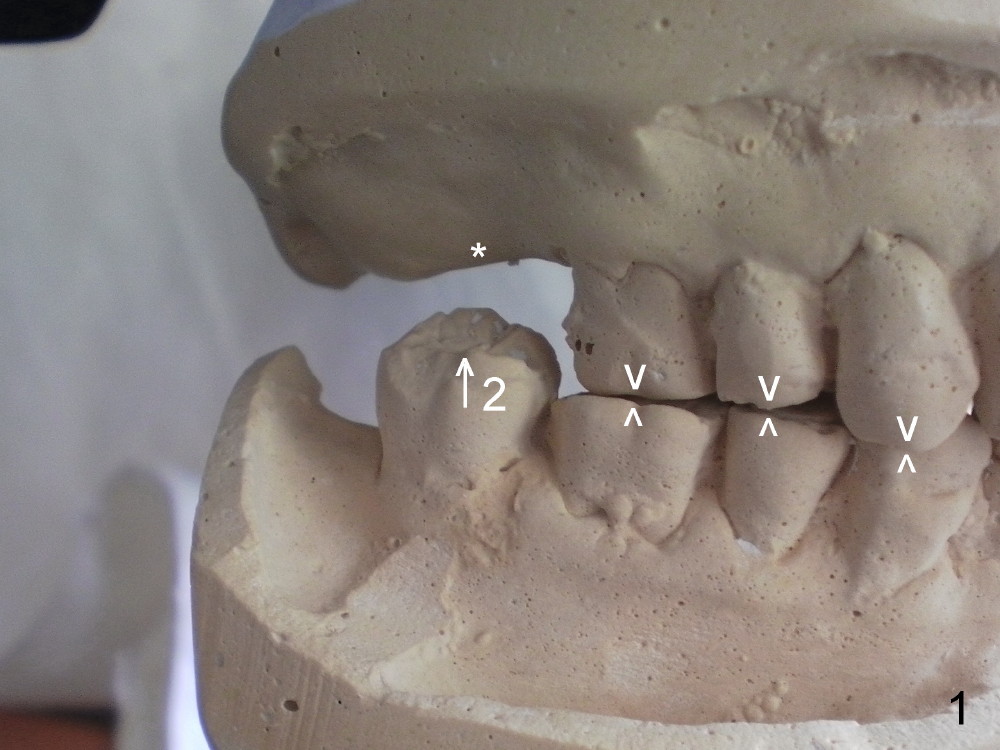
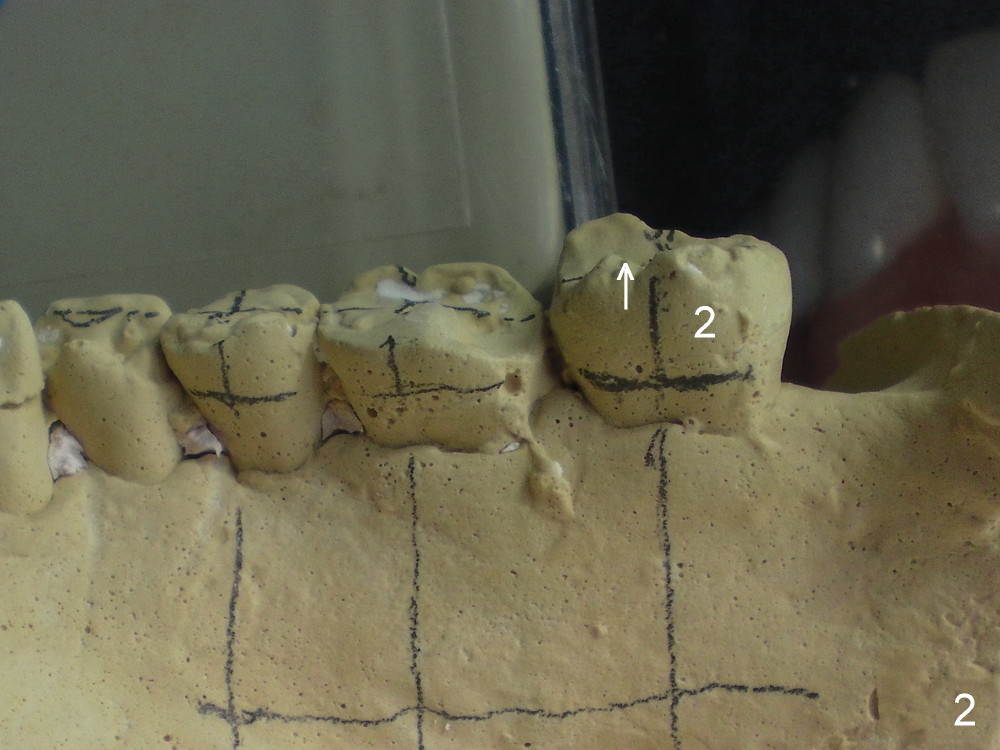

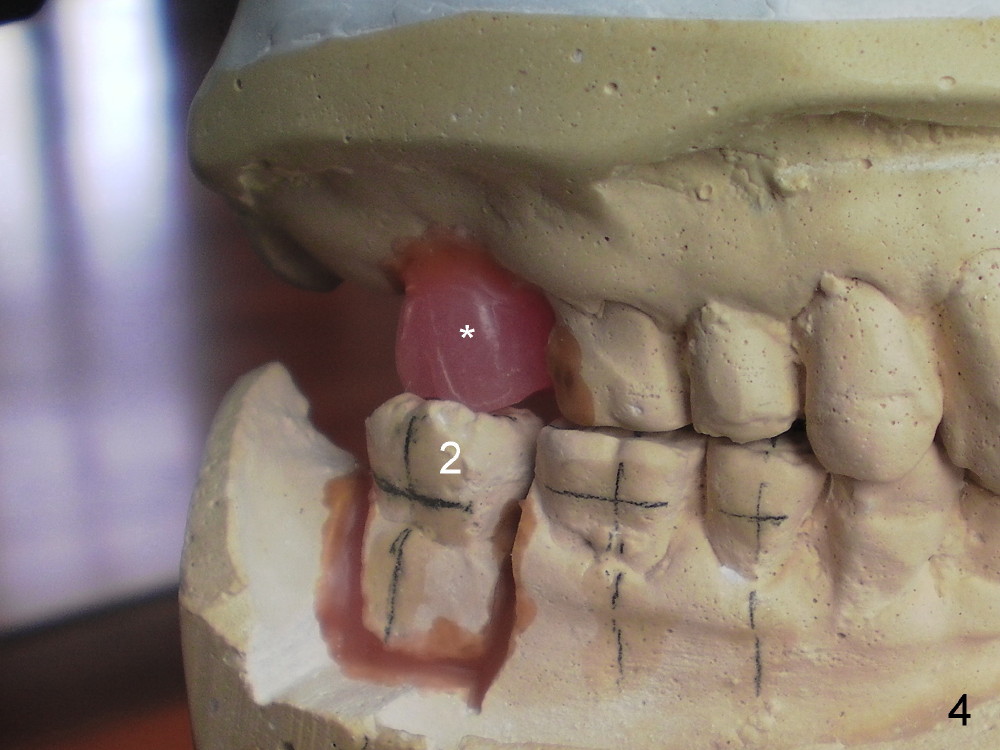
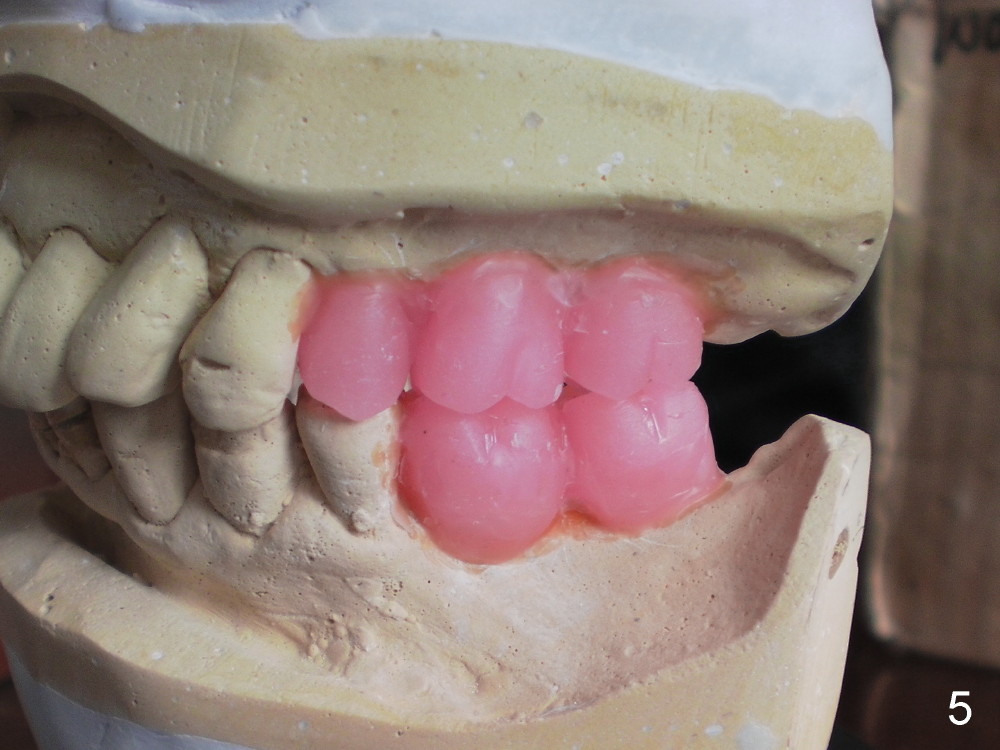
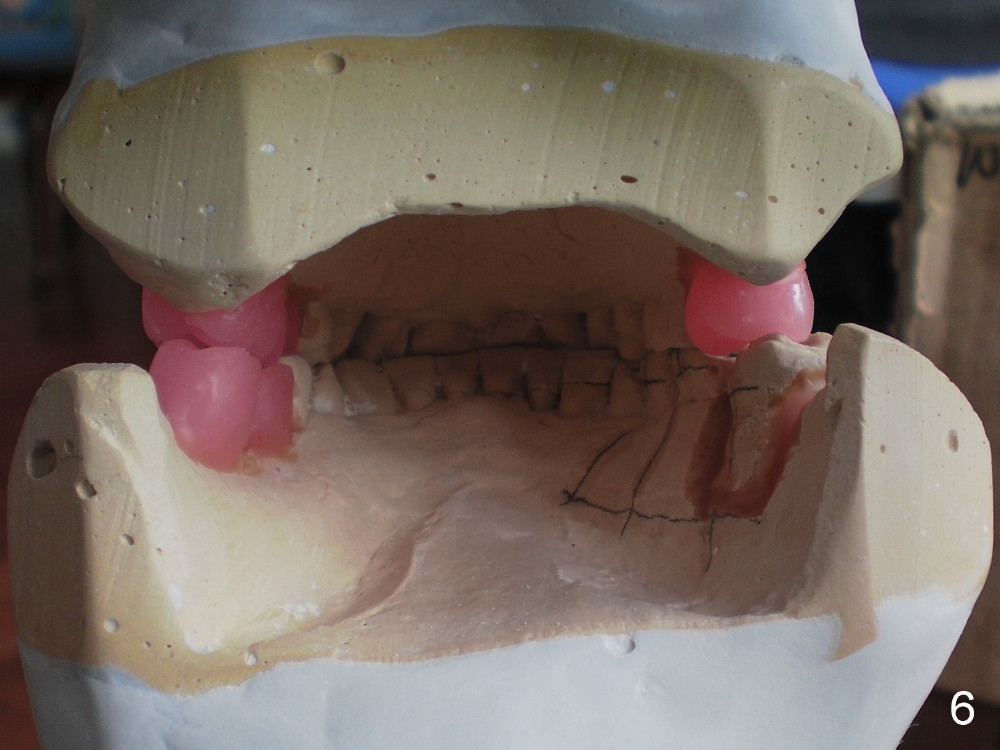
 |
 |
|
 |
 |
|
 |
 |
Why Implants?
Mr. Cui, in his early fifties, has lost six back teeth (Fig.1 * and 5 red wax teeth), which are restored with two partial dentures (partial in short). He thinks that the partial can prevent the opposite tooth from growing. In fact, the bottom 2nd molar (Fig.1: #2) grows upward more (long arrow) than any of the neighboring teeth (arrowheads: ^) because of the missing opposing tooth (*). The presence of the other opposing teeth (v) on the top keep the bottom teeth from moving upstairs. In brief, a partial denture cannot prevent tooth shifting. Additionally, the partial is removable and can only restore 10% of our chewing power. In contrast, an implant is fixed and restores 100% of our chewing capacity, just like our own natural tooth.
It is difficult to restore a missing tooth opposite to the overgrown tooth (Fig.2: #2, view from the tongue side). We need to do design in dental model. First the overgrown tooth is to be pressed down using braces (Fig.3: long arrow, as compared to the original line (arrowhead)). There is more space to place a new tooth on the top (Fig.3,4 *). Five more teeth are planned on the other side (left, Fig.5). Fig.6 shows tooth design from the back.
Xin Wei, DDS, PhD, MS 1st edition 12/01/2013, last revision 12/01/2013